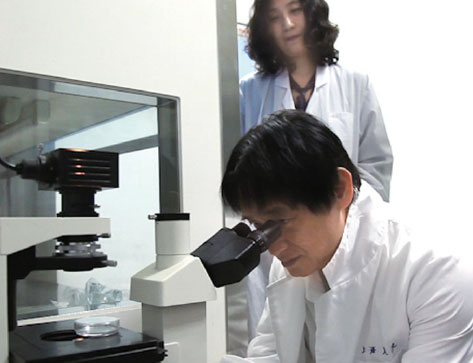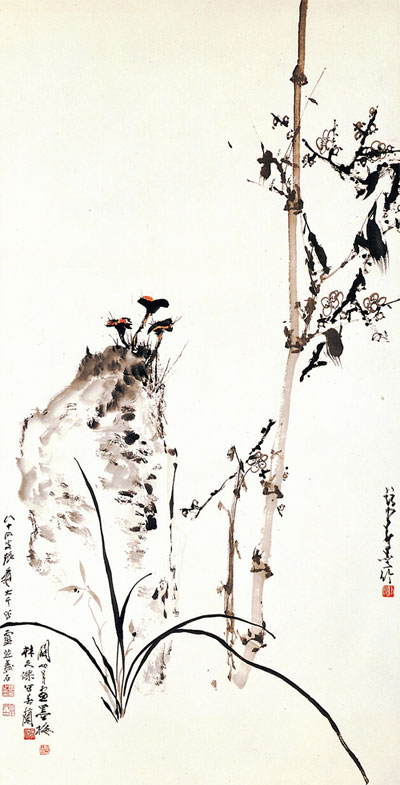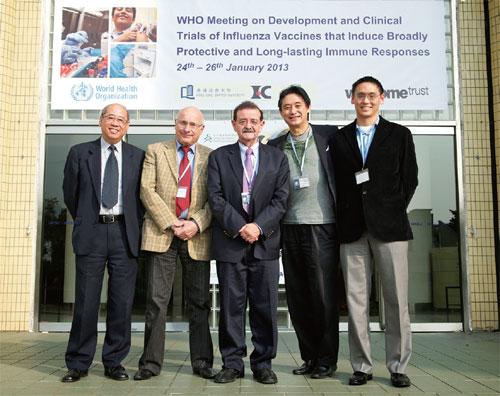Goodbye needles, hello tomato juice
Updated: 2015-11-05 09:20
By Dr Steve T. Chen(HK Edition)
|
|||||||
An edible vaccine developed by Dominic Lam Man-kit has been hailed by Time Magazine as one of the top 10 most-important inventions for the 21st century. A report by Dr Steve T. Chen.
According to recent statistics from Taiwan's Dengue fever epidemic command center, there were over 25,000 confirmed cases with over 150 deaths reported between May and October. During this period, similar cases have also been reported in the south of the Chinese mainland, Hong Kong and Macao. Elsewhere in Asia, there have been 85,488 cases in Malaysia, 86,460 in Thailand, 7,757 in Singapore and 218 in Japan. In the Americas, 1,390,779 cases were reported in Brazil and 125,199 in Mexico.
The hemorrhagic form of Dengue fever, which is more serious, might lead to a mortality rate of over 20 percent if not properly treated. Such gloomy data prompted US President Barack Obama to declare in a speech in September that "It is unacceptable that a child's life be taken away by a single mosquito bite."
Professor Dominic Lam Man-kit was among those deeply moved by President Obama's statement.
After obtaining his doctorate degree at age 22, Lam furthered his studies under Torsten Wiesel and David Hubel, two Nobel Laureates, at Harvard Medical School before joining the Harvard Faculty. He subsequently became professor of Ophthalmology at Baylor College of Medicine and the founding director of the Center for Biotechnology in Houston. In 1985, Lam started his first biotech company in Texas and took it public in 1988. In recognition of these contributions, Lam was named Father of Texas Biotechnology, and received KPMG's Entrepreneur of the Year Award, Asia Society Man of the Year as well as a US Presidential Medal of Merit.
In 1988, Professor Lam accepted the invitation from Nobel Laureates Charles Kao and C.N. Yang to be the founding director of the Hong Kong Institute of Biotechnology (HKIB), with the mission of developing Hong Kong into an international biotechnology center. HKIB received a generous donation of HK$170 million from the Hong Kong Jockey Club. Hong Kong government has, subsequently, set up the Hong Kong Science Park next to HKIB.
Why not ingest it?
In the 1980s, when Lam visited Chinese mainland regularly because of Orbis, the charitable flying eye hospital he had started, he realized that hundreds of millions of Chinese were hepatitis B positive, an infection that could lead to liver cancer. Even though vaccines were available, they were expensive and it took three injections for these to be effective. Not being an immunologist or vaccinologist, Lam asked the naive question: Why can't vaccines be made from edible plants like tomato so that the infected can simply drink three vials of tomato juice over several months to be vaccinated? This simple concept motivated him to embark on a journey of developing edible vaccine as an alternative route of vaccination, which continues to this day.
In collaboration with Professors Charles Arntzen and Hugh Mason from Texas A&M University, Lam started this pioneering research to produce vaccines in food plants in 1990. Subsequently, Lam's daughter Yee and son Fong also worked on this project when they were high school students. In 1994, they succeeded in producing a prototype vaccine against hepatitis B in tomato. In 2000, a vaccine against transmissible gastroenteritis virus of swine, which causes severe diarrhea and even death, was produced in corn and shown to be safe and efficacious in pigs.
Because many viruses mutate rapidly, Lam established another platform to produce edible vaccines much more rapidly against such microorganisms, using Lactobacteria as the carrier. In 2010, Lam, Yuhong Xu, Han Lei, et al successfully produced an experimental influenza vaccine against the H5N1 avian influenza virus. They also began research on edible influenza vaccines that induce broadly protective and long-lasting immune responses.
The recent outbreak of avian H7N9 influenza virus in human beings with high mortality in China has further emphasized the importance of controlling various influenza viruses in farm animals. Edible vaccines for animals are not only important in protecting animals. World Health Organization has estimated that cutting off the transmission of animal viruses to human beings could eliminate much of these human diseases as well. Finally, the use of edible vaccines to prevent human diseases such as hepatitis and even cancer is still at an infant stage.
For these accomplishments, Lam's patent on edible vaccine was selected by the Massachusetts Institute of Technology as one of five patents that will transform business and technology, and by Time Magazine as one of the 10 most important inventions for the 21st century.
Bringing Chinese closer
Lam has always been committed to bringing the mainland, Hong Kong, Macao and Taiwan closer through collaborations in the biotechnology industry. He recognizes that the current economic situation and biotechnology R&D infrastructure in these territories are very similar to the way these were in Texas when he started the biotechnology industry there 30 years ago. He also recognizes that there is a great need for edible vaccines to prevent the spread of animal and human diseases, as well as many other biomedical products in this region. There is also the manpower, resources as well as the humanitarian and commercial incentives for collaborations in this region on a wide range of biotechnology projects.
In 1983, as a symbol of unity among Chinese people worldwide, Lam collaborated with three great masters: Chang Dai-chien (Taiwan), Chao Shao-ang (Hong Kong) and Guan Shanyue (the mainland) on a painting entitled Plum, Orchid, Bamboo, Lingzhi and Rock. Lam thinks that biotechnology can also be a platform for enhancing collaboration and harmony in this region and beyond.
According to Professor John Tam, former technical officer for Influenza Vaccine and Global Initiative for Vaccine Research at WHO, Lam's approach of targeting the source of the infection, agricultural animals in this case, addresses both public health needs and economic well-being of the industry. His achievement in visual art world is there for many of us to enjoy and cherish; yet his uncompromising vision for scientific innovation for global health will benefit all, especially those in the developing world.
As a biomedical pioneer, artist and humanitarian on a quest to make the world a better place, Professor Lam observes: "When we started the development of edible vaccines 25 years ago, our vision was to have vaccines made affordable in less developed countries. To date, the need for edible vaccines, which are much less expensive to produce, easy to use and require no cold storage, is more urgent than ever."
The author is a member of the Board of Governors of City University of Hong Kong Foundation and vice-chairman of the Hong Kong-Taiwan Business Association.
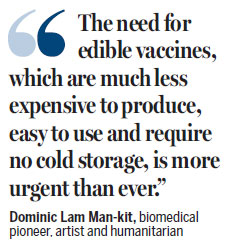
|
Professors Xu Yuhong and Dominic Lam do research on edible vaccine at Shanghai Jiao Tong University in 2010. |
|
A collaborative painting in 1983 entitled Plum, Orchid, Bamboo, Lingzhi and Rock by Dominic Lam with three great masters: Chang Dai-chien (Taiwan), Chao Shao-ang (Hong Kong) and Guan Shanyue (the mainland). This painting symbolizes the unity of Chinese people around the world. |
|
From right: Dr Fong Lam, Assistant Professor in Paediatrics at Baylor College of Medicine, Professor Dominic Lam, Dr Jose Esparza (Gates Foundation), Dr Marc Girard (Pasteur Institute) and Professor John Tam at the first WHO meeting on Influenza and Vaccines in Hong Kong in 2013. |
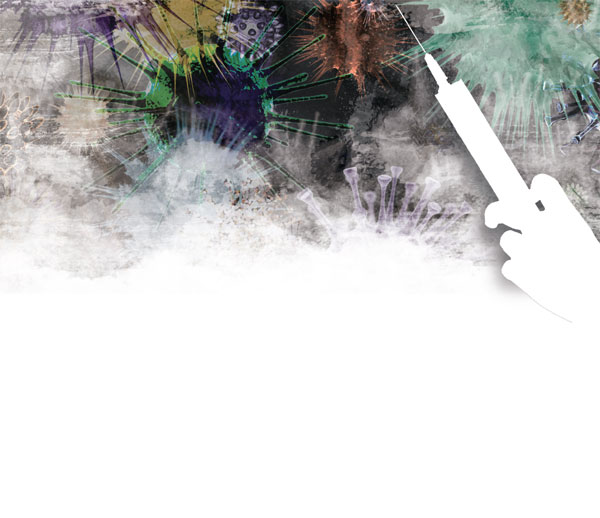
(HK Edition 11/05/2015 page10)
